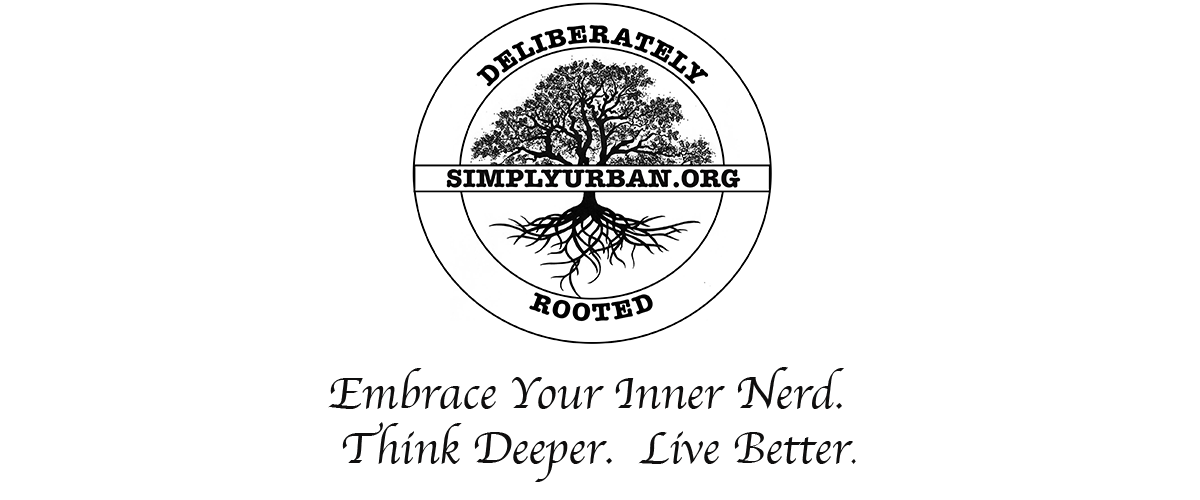It should come as no surprise that success in business depends on making good decisions. Indeed, intuition, experience, and emotional intelligence play a significant role. But, while these can provide a hunch that starts you down a particular path, it’s through data that you verify, understands, and quantify. Theoretically, more data points mean better decisions, but those of us in the real world know it’s more complicated than that.
Data Analytics has become the next shiny thing every company’s chasing. Yet, almost 3 of 4 companies report a lack of success, mostly due to cultural issues. Of course, transforming your organization’s culture is no mean feat in the best of circumstances. But sorting through mountains of bits and bytes is particularly challenging, as I describe in this series of essays.
Most companies report cultural challenges as an impediment to using information more effectively. But, the ability to integrate complex knowledge in valuable ways can create barriers to entry or economic moats.
Sustainable Competitive Advantage
Most business people recognize the efficacy of Economic Moats or Barriers to Entry. Investopedia defines an Economic Moat as:
[…] a business’s ability to maintain competitive advantages over its competitors in order to protect its long-term profits and market share. Just like a medieval castle, the moat serves to protect those inside the fortress and their riches from outsiders.
Michael Porter traditionally defined Barriers to Entry as things like the Bargaining Power of Suppliers, the Threat of Substitutes, etc. Yet, those concepts fail to describe much of the success we see in the digital age.
Nature of Technological Barriers to Entry
Technology protected by patents or that is difficult to imitate creates Barriers to Entry. A company like Google has multiple layers of barriers to entry. One layer is technological sophistication. Google’s revolutionary page rank algorithm and its invention of more effective technological approaches, like the development of the MapReduce programming model, grant it a technological edge that’s very hard to replicate.
Technological know-how created Google’s initial barrier to entry. Google Search also requires hugely expensive data centers to crawl and store the web, which lends it the Barrier to Entry of high Capital Requirements. We observe similar barriers to entry in other tech companies. For instance, the Windows operating system depends on the interaction of a mind-numbing 50,000,000 lines of code.
I hope you’re convinced that hard-to-replicate and valuable intellectual property can act as a Barrier to Entry. The chain of reasoning below rests on that premise. If not, please let me know why you disagree in the comment section below. I don’t claim to have all the answers, and I welcome different perspectives.
Intellectual Edge as a Barrier to Entry
The democratization of cloud computing and the complexity of data analytics create the conditions for businesses to create their own pockets of sophisticated technological barriers to entry. To be clear, that doesn’t mean companies need millions of lines of code. It just means hard to replicate and valuable know-how. So, it could be a more sophisticated way of processing web traffic to understand customers or a better algorithm to predict stock prices.
And the fact that so many company cultures fight analytical sophistication means it’s easier for companies that embrace data to carve out significant advantages. So, how exactly can managers create a culture capable of creating technological barriers to entry? Well, it’s easier said than done because Barriers to Entry are hard by definition.
Data analytics comprises one of the most complex fields in business today. Most people think of Data Science (DS) and Business Intelligence (BI) when they think of data analytics. Both of these rely on Data Engineering (DE) to move, clean, and transform the information consumed by DS and BI. Moreover, these capabilities are synergistic and self-reinforcing. The quality of Data Science models depends on DE for voluminous data and a rich variety of features. BI acts like a human interface with DS and DE. Dashboards, graphs, and reports allow humans to interact with the endless streams of bits and bytes of 1’s and 0’s that only computers can understand.
Intellectual Edge as a Barrier to Entry
One way to achieve technological sophistication is to overlay concepts in unique and valuable ways. We can observe this in Google Search’s success. Google first outdid rivals by employing a technological solution to the notion that website relationships are best organized by cataloging how they’re linked together rather than imposing a top-down taxonomy of topics. Early search engines tried to organize the internet loosely like a library: fiction, non-fiction, sci-fi, etc. Google developed an intellectual edge by realizing relationships among websites could best be understood by how they link and relate to one another. Then, Google continued to compound this intellectual edge by pioneering new programming languages and computational approaches like MapReduce, which allowed for more efficient processing of website links.
But I argue this phenomenon isn’t isolated to software companies. I believe this way of thinking also explains success in other high-complexity fields. A hundred years ago, heavy equipment manufacturing was the high-tech industry of its time. Henry Ford’s revolutionary success in creating the first auto Assemble Line was really just an application of continuous flow manufacturing processes. He hypothesized that he could increase the efficiency of auto manufacturing by orders of magnitude if he just keep the line moving. His ideas would go onto revolutionize modern manufacturing.
How to Build a Company Where the Best Ideas Win
Interleaving complex intellectual frameworks, like the examples given above, seems a lot like the challenge faced by Data Analytics Managers. How can managers interleaf the disciplines of DS, BI, and DE to create Technological Barriers to Entry? Managers typically deal with complexity by implementing a bunch of procedures. But that wouldn’t work in this case because technology changes too quickly. The technology in question would be out of date by the time management had learned it and written up detailed procedures.
So, leadership will need to take the form of setting broad direction rather than detailed procedures. And since management cannot always be experts in the latest technologies, they’ll need to rely on their employees to volunteer their best effort towards interleafing their knowledge with other experts. A lot of that depends on the intrinsic motivation of employees. But, management can do some things to encourage it.
Creating a Culture of Advantage
Creating an awesome culture is hard and involves many aspects, like developing great managers, hiring folks with the appropriate technical know-how, and qualities like open-mindedness, curiosity, etc. Technical employees must also be given the time and support to learn new technologies. But, I want to focus specifically on how to interleaf ideas from various experts in a quickly changing technical space.
First, managers must manage by setting a general direction and giving employees the leeway to figure out the details. One way to do that is by managing using CTQ trees. CTQs is a concept from Lean Six Sigma that allows managers to provide a general direction that technical workers can later unpack, dependent on the context of implementation. For example, this article gives an example of a project for developing a niche local music website.
It begins with a customer need which could be something like ‘need = information on the local music scene.’ Then, that need can be further broken down into drivers. In this example, drivers that could meet the need might be things like timely information on local shows, critical reviews, etc. Technologists could then drill down into requirements like a section of the website listing shows times and locations well in advance. This approach to goal setting allows management to set a clear context-dependent direction in a rapidly changing environment.
Talk it Out
But, the most important aspect of combining expertise to create technical barriers to entry is talking it out with other experts. In the rush to efficiency and to check off requirements, technical teams often miss the forest for the trees. Although taking a step back and talking through the strategy and objectives can seem like a waste of time, it can yield invaluable insights.
Consider the previous example where Google revolutionized the search industry by abandoning the established approach of categorizing websites according to a predefined taxonomy (like a library: fiction, non-fiction, etc). Their decision to abandon conventional wisdom and

The idea that people should talk things out isn’t new. It’s a tried and true piece of wisdom that’s easily forgotten, and it’s a key aspect of Western Thought. Logic, science, and law all rest on the foundations of Socrates challenging conventional wisdom, talking under the olive trees of Athens. Having someone question your thinking can be a bit of an ego blow. But two heads are better than one, and an open, vulnerable discussion can be worth its weight in gold. This notion underlies many institutions where the search for truth has become ritualized. Its called the dialectic in philosophy, as pioneered in the famous Socratic Method. In Law, it’s called the Adversarial System, while Academia refers to it as Peer Review, etc.
Conclusion
No, that doesn’t mean I think technologists should become philosophers. However, tech companies moving their headquarters to an olive tree in Athens so their employees can kick it like Socrates does seem strangely appealing.

There are a ton of variables going into any software venture. But, I do think technology and data analytics, in particular, needs a better management philosophy. That shouldn’t come as a surprise, given that 3 out of 4 companies report a lack of success in data analytics, mostly due to cultural issues. Despite the plethora of success variables in data analytics, the ability to create a technical barrier to entry by 1) setting broad guidelines that teams can unpack based on the context at hand and 2) enabling teams to combine expertise in a rigorous pursuit of better-applied truths through open, thoughtful dialogue is certainly at its core.
Ray Dalio’s Bridgewater Associates has enjoyed remarkable success using this method. And, if you really think about it, most business innovations, from Ford’s assembly line to Google’s Pagerank algorithm, demonstrate strong elements of this theory.
What do you think?
Thanks for reading to the end! This blog is my project in the pursuit of truth. I spend dozens of hours researching each blog post, so I hope you found something useful.
Our click-bait culture needs good ideas in an increasingly complex world. That depends on good men and women engaging in intellectually honest discussions, sharing ideas, and challenging each other’s thinking. Writing out my thoughts in detail, along with lots of research, helps me arrive at a more accurate view of truth based on well-documented facts.
If you’d like to support my blog please buy my book. Here’s the link!




Leave a Reply
Your email is safe with us.